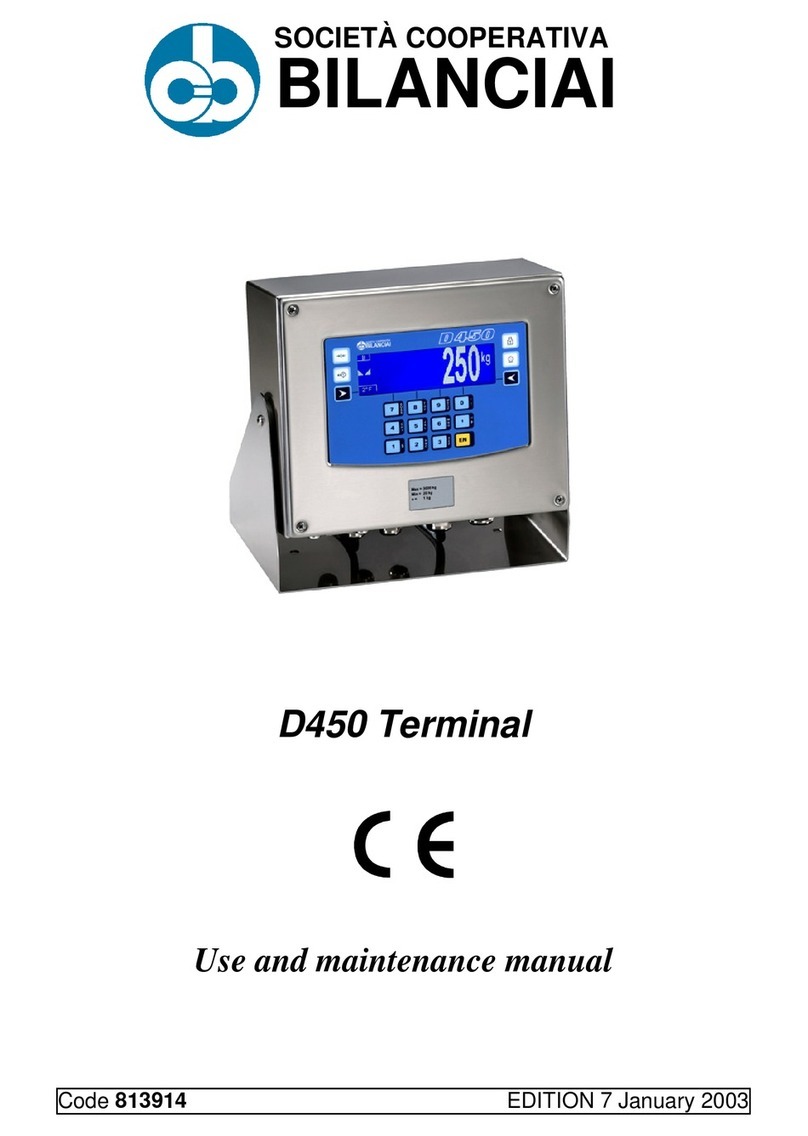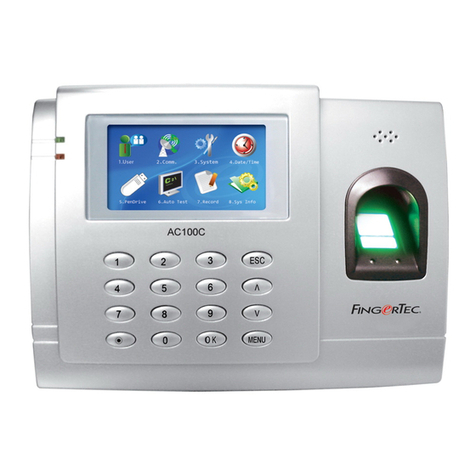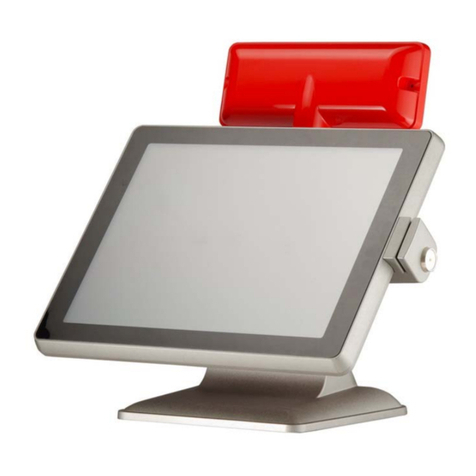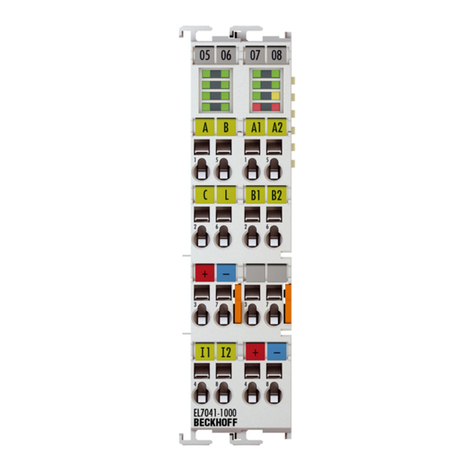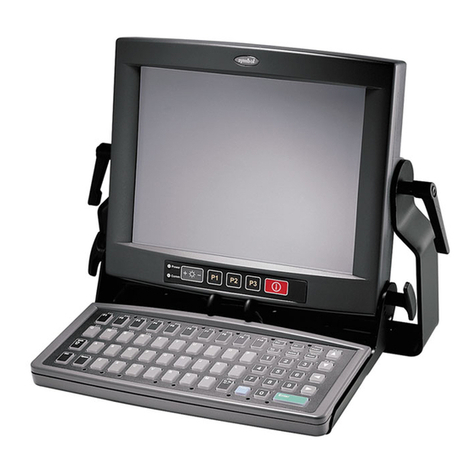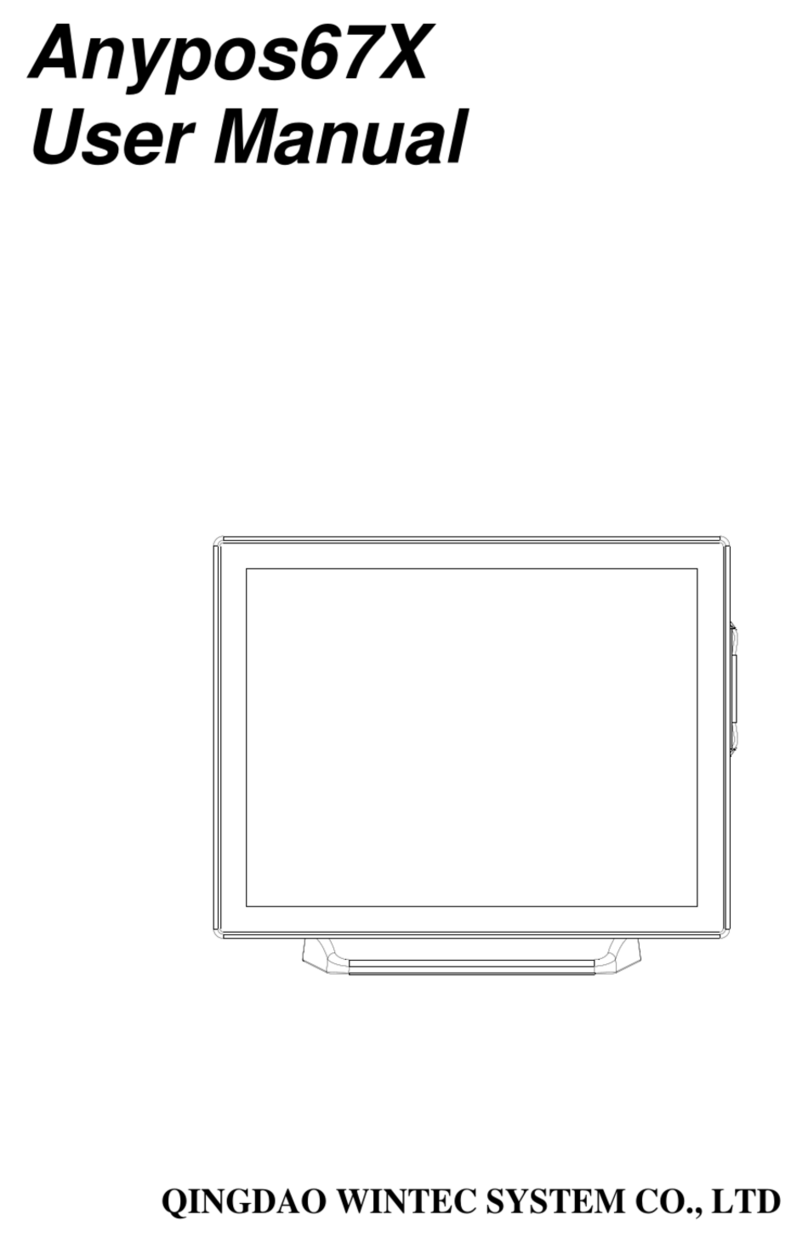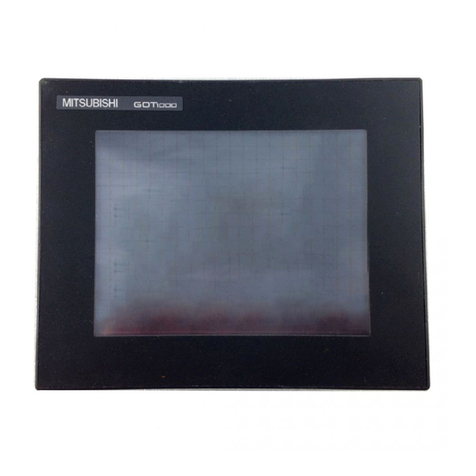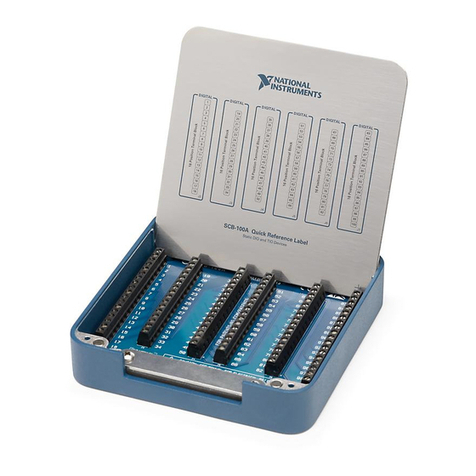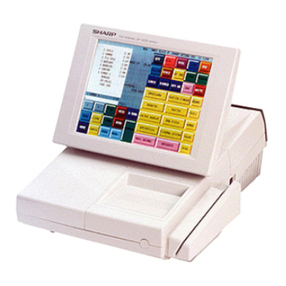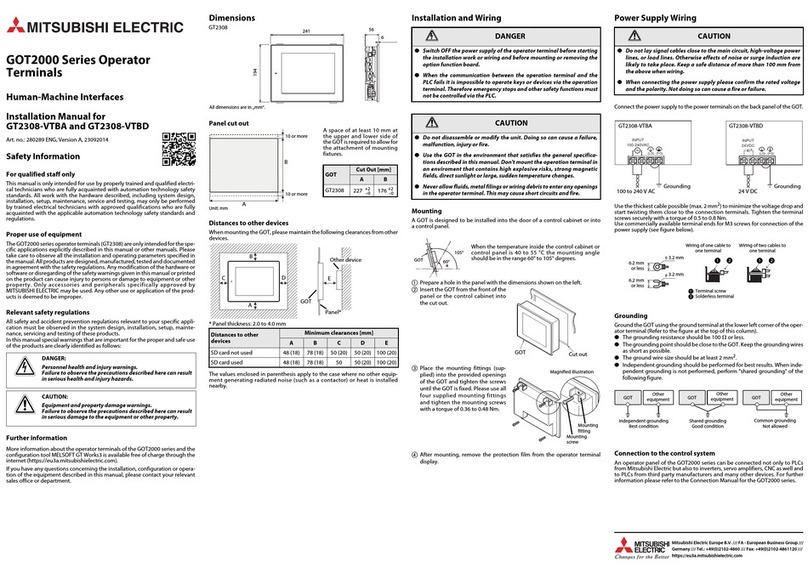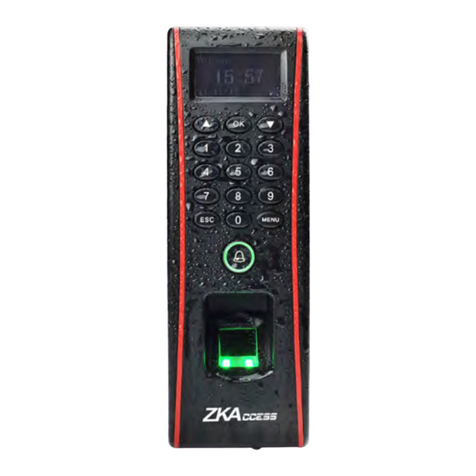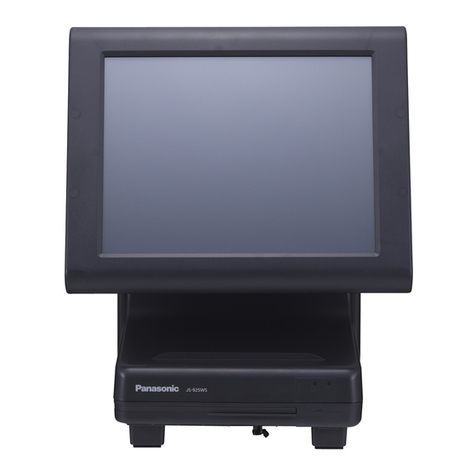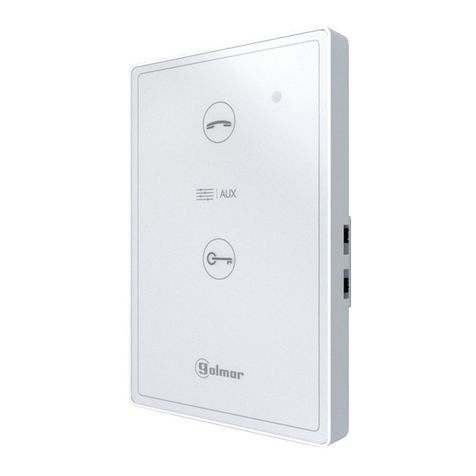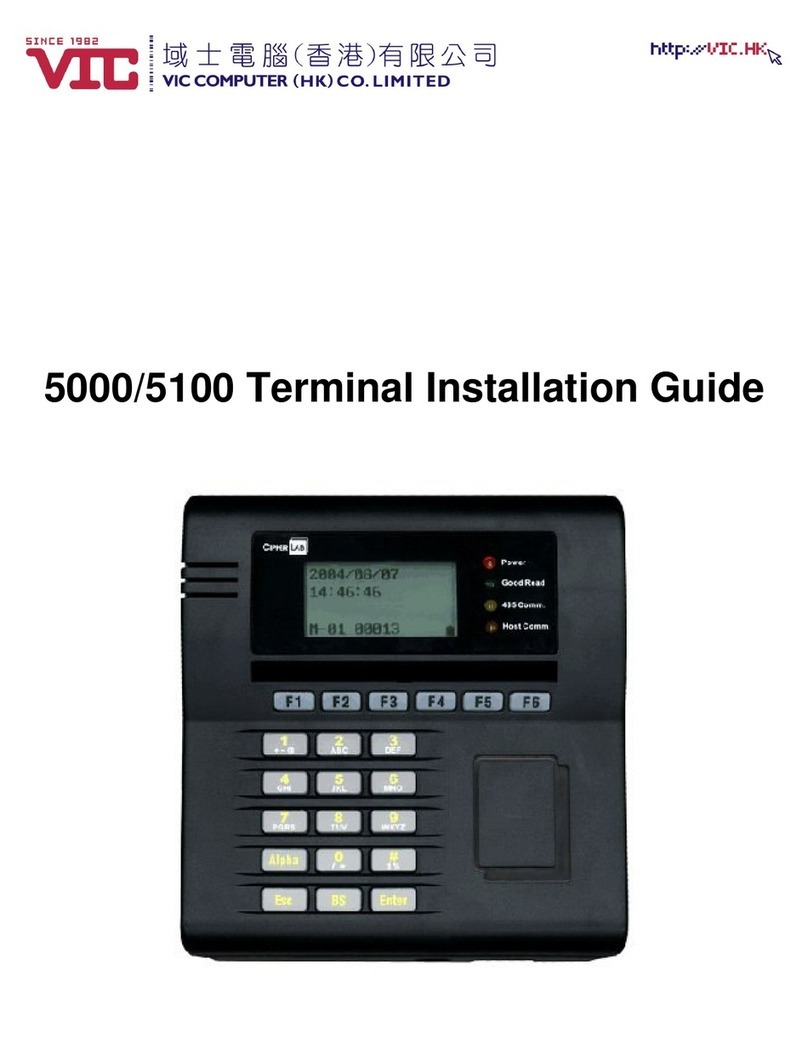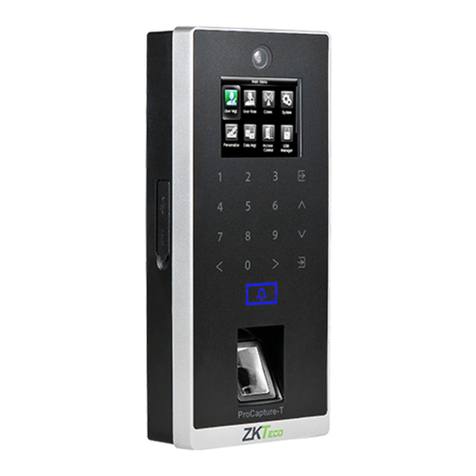Bilancial D410 User manual

SOCIETÀ COOPERATIVA
BILANCIAI
D410 Terminal
Use and maintenance manual
Code 813711 EDITION 30 May 2001


Index
1. GENERAL 1-5
1.1 Declaration of conformity 1-5
1.2 Foreword 1-6
1.3 Symbols 1-8
1.4 Documentation 1-9
1.5 Description of the terminal 1-9
1.6 Technical characteristics of the terminal 1-10
1.7 Dimensions and weight of the terminal 1-11
1.8 Obtaining technical assistance 1-13
1.9 Replacement parts list 1-14
1.10 Warranty 1-14
2. SAFETY INSTRUCTIONS 1-15
2.1 Prohibited uses 1-15
2.2 Regulations 1-15
2.3 Prescriptions of use 1-15
3. DELIVERY AND INSTALLATION 1-17
3.1 Connection of the terminal to the electrical supply line 1-18
3.2 Connection of the terminal to the platform scale 1-19
3.2.1 Equipotentiality between the terminal and the platform scale 1-20
3.2.2 Connection of analogue load cells 1-20
3.2.3 Connection of digital load cells 1-21
3.3 COM1 serial port connection 1-22
3.4 COM2 serial port connection 1-23
3.4.1 Connection of COM2 in RS232 configuration 1-23
3.4.2 Connection of COM2 in RS422 configuration 1-24
3.4.3 Connection of COM2 in RS485 configuration 1-25
3.5 Analogue output connection 1-26
3.6 Input/Output connection 1-27
4. CONTROLS, DISPLAY, SWITCHING THE TERMINAL ON AND OFF 1-29
4.1 Display of weight and additional information 1-29
4.1.1 Selection display symbols 1-30
4.2 Weighing function keys 1-31
4.3 Alphanumeric keys 1-33
4.4 Switching the terminal on and off 1-34
5. USE OF THE TERMINAL 1-37
5.1 General 1-37
5.1.1 Using the keys to navigate the menus 1-37
5.1.2 Entering numeric data (Editor) 1-38
5.1.3 Entering alphanumeric data 1-38
5.1.4 Shortcut keys 1-40
5.2 User menu 1-40
5.2.1 User menu tree 1-40
5.2.2 Adjusting the contrast 1-42
5.2.3 Changing the date and time 1-42
5.2.4 Weight display 1-42
5.2.5 Memory status 1-45
5.2.6 Reprint 1-45
D410
1-3

5.2.7 Diagnostics (for digital scale only) 1-45
5.2.8 Setting the outputs as Setpoints (if enabled) 1-46
5.2.9 Setting the outputs as ranges (if enabled) 1-46
5.2.10 Generic code 1-46
5.2.11 Product code 1-47
5.2.12 Product code list 1-47
5.2.13 Preset tares 1-48
5.2.14 Preset tare list 1-48
5.2.15 Progressive number 1-49
5.2.16 Coefficient Management 1-49
5.2.17 Totals management 1-50
5.3 Printing weighing data 1-52
5.3.1 Weighing data reprint 1-53
5.4 Operating modes 1-54
5.4.1 Standard operation 1-54
5.4.2 Sum weighing operation 1-54
5.4.3 Loading extraction operation 1-54
5.4.4 Unloading extraction operation 1-55
5.5 MPP operation 1-55
6. OPTIONS 1-57
6.1 4 I/O board 1-60
6.2 BCD parallel 5V 1-61
6.3 Calculator BCD 1-63
6.4 Parallel 24V source current BCD (positive common) 1-65
6.5 Serial port expansion board 1-68
6.6 MPP memory expansion boards 1-71
6.6.1 Memory capacity 1-71
6.6.2 Operation 1-71
6.6.3 Disabling MPP 1-72
6.6.4 Checking memorised weight data 1-73
6.7 12-24Vac-dc input power supplier 1-74
6.8 Printers 1-76
7. MAINTENANCE 1-77
7.1 Battery 1-77
7.2 Changing the fuses 1-77
8. TROUBLESHOOTING 1-79
8.1 Malfunctions 1-79
8.2 Error messages 1-80
D410
1-4

1. GENERAL
1.1 Declaration of conformity
DECLARATION OF CONFORMITY
Manufacturer: SOCIETÀ COOPERATIVA
BILANCIAI
Address: Via S. Ferrari, 16
41011 Campogalliano (MO)- Italy
declares that the product
electronic terminal model: D410
with the options all those described in this manual
conforms to:
✔standards EN45501, EN50081-1 in accordance with the
requirements of Directive 89/336 EEC (electromagnetic compatibility)
✔standard EN60950 in accordance with the requirements of Directive
73/23 EEC (low voltage directive)
The terminal is also suitable for the creation of approved
non-automatic weighing instruments with "CE Type Approval
Certificate" in conformance with the requirements of Directive 90/384
EEC.
The product bears the CE marking.
Campogalliano, 24 July 2000
Technical Director
Eng. Luciano Diacci
Declaration drafted in conformance with EN45014.
D410
1-5

1.2 Foreword
✔The aim of this manual is to provide the operator, through the use of
text and illustrations, with essential information regarding the
installation, safe operation and maintenance of the weighing system.
✔This manual must be kept in a safe place where it is readily available
for consultation. Always observe the instructions contained in the
manual!
✔The safe operation of the system is the responsibility of the operator,
who must have a thorough knowledge of the system.
✔The user is responsible for ensuring that the installation conforms to
the applicable regulations.
✔The equipment must be installed by specialised personnel who have
read and understood this manual.
✔"Specialised personnel" means any personnel who, by virtue of the
training they have received and their professional experience, have
been explicitly authorised by the "System safety supervisor" to install,
operate and maintain the system.
✔In the event of any problems, contact your nearest Service Centre.
✔Any attempt on the part of unauthorised personnel to dismantle or
modify the terminal is prohibited; any such attempt shall invalidate the
warranty and release the manufacturer from all liability for any injury
or damage.
✔The alteration or removal of the data plates and seals is strictly
prohibited; check that all plates and seals are present and legible, if
not contact After-Sales Service.
✔The manufacturer shall not be liable for any damages caused by
incorrect handling of the terminal.
✔The information and illustrations contained in this manual were up to
date at the time of publication.
✔The Manufacturer is committed to a policy of continuous product
improvement and system components may therefore be subject to
modification.
✔All the technical information contained in this manual remains the
exclusive property of the manufacturer and may not be divulged to
third parties.
✔No part of this document maybe reproduced or transmitted in any
D410
1-6

form, including publication in computerised form or on the World Wide
Web, without the express written permission of the manufacturer.
✔This manual may not be used for purposes other than those directly
related to the installation, operation and maintenance of the terminal.
✔In order to more clearly illustrate certain maintenance or adjustment
operations, some of the illustrations in this manual show the weighing
system with the safety guards removed. Under no circumstances may
the system be operated in these conditions. Do not operate the
system in these conditions under any circumstances whatsoever, but
remove the safety guards for the time strictly required to carry out the
required repairs or maintenance then fit them back in place.
D410
1-7

1.3 Symbols
Below is a list of the symbols used in this manual to alert the reader to
the various hazards associated with the operation and maintenance of
the instrument.
DANGER
Denotes an operation or procedure where failure to observe
the instructions will result in death or serious injury.
CAUTION
Denotes an operation or procedure where failure to observe
the instructions could result in minor injury or damage to the
instrument.
WARNING
Information or instructions on how the system is to be
operated correctly in order to maximise its service life or
prevent loss or damage of programmed data or to optimise
operation with regard to metrological standards.
Text and messages displayed on the terminal are printed in this manual
using special characters.
Messages:
Display messages appear like this.
Menu pathways:
2°F>OTHER>MENU>Contrast.
The character > indicates the transition from one menu option to the
next.
D410
1-8

1.4 Documentation
This manual is accompanied by a CD-ROM that primarily contains
information about the installation of the terminal.
Here you will find information on how to interface the terminal with a PC
and PLC.
1.5 Description of the terminal
The model D410 digital weight indicator allows highly accurate and
reliable weighing. This terminal is designed to facilitate dialogue with the
operator through the alphanumeric keypad and graphic display, which, in
addition to being extremely easy to use, has facilities for changing the
shape and size of the display characters to suit various conditions of
use. The D410 terminal provides a wide range functions, which,
combined with the possibilities for expansion, allow for easy interfacing
with external equipment.
Some of the main features of the terminal:
✔facility for connection to a scale with analogue load cells (up to 12 x
350 ohm load cells)
✔facility for connection to a scale with digital load cells (up to 12 CPD
load cells)
✔two RS232/422/485 serial ports
✔analogue output of 0-10V or 0(4)-20 mA
✔2 inputs and 2 relay outputs
✔110/230 Vac power
✔specific operating modes that can be selected by the operator
✔facility for connection to a tally roll printer, document printer or
labelling machine
✔management of totals files associated with alphanumeric codes
✔quick customisation of keypad and messages
D410
1-9

1.6 Technical characteristics of the terminal
Power supply 85-265 Vac 50/60 Hz
12-24 Vdc (optional)
Maximum power: 50 W
Load cell connection: up to 12 analogue load cells of
350 ohm via 9-pin D-type
connector
up to 12 CPD digital load cells via
15-pin D-type connector
Minimum impedance: 29 ohm
10 VdcAnalogue load cell power: 10 - 18 VdcDigital load cell power:
Internal resolution: 500000 points @ 25 conv/sec
120000 points @ 100 conv/sec
10000 divisions maximumResolution in type-approved
version: 23 mVMaximum input signal:
Sensitivity: 0.75 uV/division (version with
analogue load cells)
Full scale stability: < 5 ppm/°C
Zero stability: < 5 ppm/°C
-10 + 40 °CCompensated temperature range: -10 + 50 °COperating temperature range:
Protection class: IP20
85 % @ 40°C
Humidity:
D410
1-10

Analogue output: 0 - 10 V (minimum load 100 kohm)
0 (4)-20 mA (maximum load
250ohm)
10000 pointsAnalogue output resolution:
Analogue output precision: 0.05 % FS
mechanical contact
Output contacts: 110 Vac/dc maximumSwitchable voltage: 200 mA maximum
Switchable current:
1.7 Dimensions and weight of the terminal
Weight: 2 Kg
Dimensions of panel space for rack mounting: 200 mm x 104 mm (base
x height)
The dimensions are given in mm.
Figure 1.1 - Dimensions and weight of rack-mounted version
(cbd0010.jpg)
D410
1-11

Weight: 2 Kg
The dimensions are given in mm.
Figure 1.2 - Dimensions and weight of table top version
(cbd0009.jpg)
Weight: 2.5 Kg
The dimensions are given in mm.
Figure 1.3 - Dimensions and weight of version with tilted support
(optional) (cbd0012.jpg)
D410
1-12

1.8 Obtaining technical assistance
In the event of any operating faults requiring the intervention of
specialised technicians, contact the manufacturer or your nearest
Service Centre. To enable us to deal with your request swiftly, always
quote the serial number of your terminal, which can be found on the seal
label. Also provide information about the system in which the terminal is
installed.
D410
1-13

1.9 Replacement parts list
Replacement parts can ordered directly from the manufacturer or from
your nearest Service Centre.
Description
Code
460727 Series D400/800 110/230 Vac
power supplier
460740 Power supplier series D400/800
12-24Vdc-ac
290389 D410 keypad
403941 CPU board
460728 Converter for analogue load cells
403961 Interface or digital load cells
403981 MPP FLASH memory expansion
board
403991 Serial expansion board
404001 4 inputs/4 outputs board
404011 BCD TTL or calculator board
404012 BCD 24V source board
527313 Battery
460729 Display
1.10 Warranty
The conditions of warranty are stipulated in the contract of sale.
D410
1-14

2. SAFETY INSTRUCTIONS
2.1 Prohibited uses
The instrument you have purchased is a weighing system and has been
designed and manufactured as such. The instrument is primarily
intended for the weighing of goods.
✔It is forbidden to use the terminal without taking the necessary
precautions for safe use.
✔Use of the terminal in places with potentially explosive atmospheres
or in areas where there is a risk of fire is strictly prohibited.
Any other use shall only be permitted if expressly authorised by the
Manufacturer.
2.2 Regulations
The operating conditions for the electronic terminal are subject to the
regulations in force in the country in which the terminal is used. All use
of the terminal in conditions which do not comply with these regulations
is prohibited.
2.3 Prescriptions of use
✔Strictly comply with the instructions in this manual during use.
✔In the event of any discrepancy between the information in this
manual and the instrument purchased, contact your Dealer or the
Manufacturer's After-Sales Service for clarification.
✔Always observe the indications given on the warning and danger
plates on the terminal.
✔Check that all the safety guards are in place and that the connection
cables are in good condition and connected correctly.
✔Check that the terminal is connected to an electrical outlet socket
equipped with an effective earth connection. Make sure that the line
complies with the applicable regulations. Check that there is no
difference in potential between the earth and neutral conductors.
✔If the terminal is to be connected to other devices (e.g. a computer),
these devices must be disconnected from the electrical supply before
connection to the terminal.
D410
1-15

✔All maintenance and/or repairs must be carried out by authorised
personnel only.
✔Always disconnect the terminal from the electrical supply and wait a
few minutes before accessing the internal components.
D410
1-16

3. DELIVERY AND INSTALLATION
Key
1. 9-pin male connector (JBIL) for platform scale connection (15-pin
male for digital load cells)
2. 9-pin female serial port connector (JCOM 1) for printer connection
3. 9-pin female serial port connector (JCOM 2) for connection of
various devices
4. Data plate indicating voltage, frequency and fuse types
5. Analogue output connection terminals (JVI)
6. Input/Output connection terminals (JI/O)
7. Earth screw
8. Male 3-pin connector for power supply connection
9. Fuses
10. ON/OFF switch
11. Expansion slot 2
12. Expansion slot 1
Figure 3.1 - Rear of terminal (log0103.jpg)
D410
1-17

3.1 Connection of the terminal to the electrical supply line
DANGER
Check that:
✔The voltage and frequency of the electrical supply line
corresponds to the indications on the warning plate on the
rear of the terminal (see point 4 Figure 3.1 on page 1-17 );
✔the mains outlet socket to which the terminal is connected
is equipped with an earth;
✔the warning and danger signs are present and legible;
✔failing this, notify your maintenance personnel or contact
our Assistance Service directly;
For the correct connection of the terminal to the electrical supply line,
proceed as follows:
✔plug the 3-pin connector of the power lead into the connector on the
rear if the terminal;
✔insert the plug of the power lead into the correct mains outlet socket.
The terminal complies with the European Directive for electromagnetic
compatibility, however it is good practice to provide a separate power
supply line for the terminal.
D410
1-18

WARNING
Do not route the terminal connection cables alongside power
cables as these could cause disturbances that interfere with
the correct operation of the terminal. Only use the connection
cable supplied with the terminal. If the cable supplied is too
short, do not attach an extension lead but contact the
Manufacturer.
3.2 Connection of the terminal to the platform scale
The terminal is normally supplied with a pre-wired cable for connection
to the platform scale. The female connector on this cable should be
plugged into the male 9/15-pin connector (JBIL) on the rear of the
terminal (see point 1 Figure 3.1 on page 1-17 ). The connection
method may vary according to the type of transducer on the platform
scale (analogue or digital).
WARNING
The cable screen should always be connected to the metal
cap of the 9/15-pin connector. Do not route the scale
connection cable alongside power cables.
D410
1-19

3.2.1 Equipotentiality between the terminal and the platform
scale
Check that a condition of equipotentiality exists between the metal parts
of the terminal and the platform scale.
If in doubt, connect the terminal and the scale using a earth wire of at
least 6mm² using the earth screw on the rear of the terminal (see point 7
Figure 3.1 on page 1-17 ).
The cables required for this connection are to be provided by the
customer.
3.2.2 Connection of analogue load cells
The diagram below shows the pinout for the JBIL connector for
connection to scales with analogue load cells.
Key
NC = Reserved - do not connect
SIG + = Signal +
SIG - = Signal -
EX + = Excitation +
EX - = Excitation -
SENSE + = SENSE signal +
SENSE - = SENSE signal -
Figure 3.2 - Pinout for the JBIL connector for connection to scales
with analogue load cells (log0001.gif)
D410
1-20
Table of contents
Other Bilancial Touch Terminal manuals
